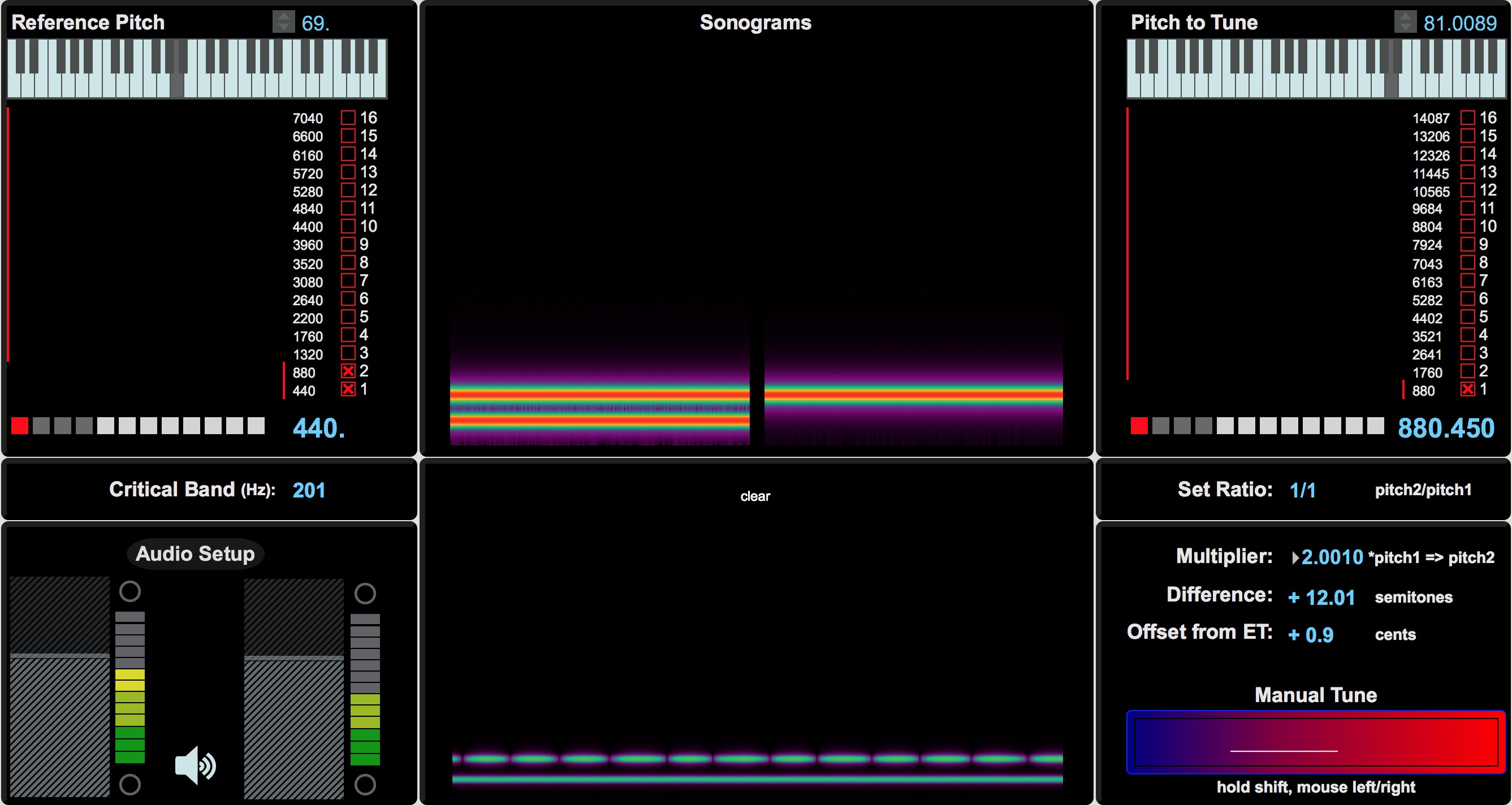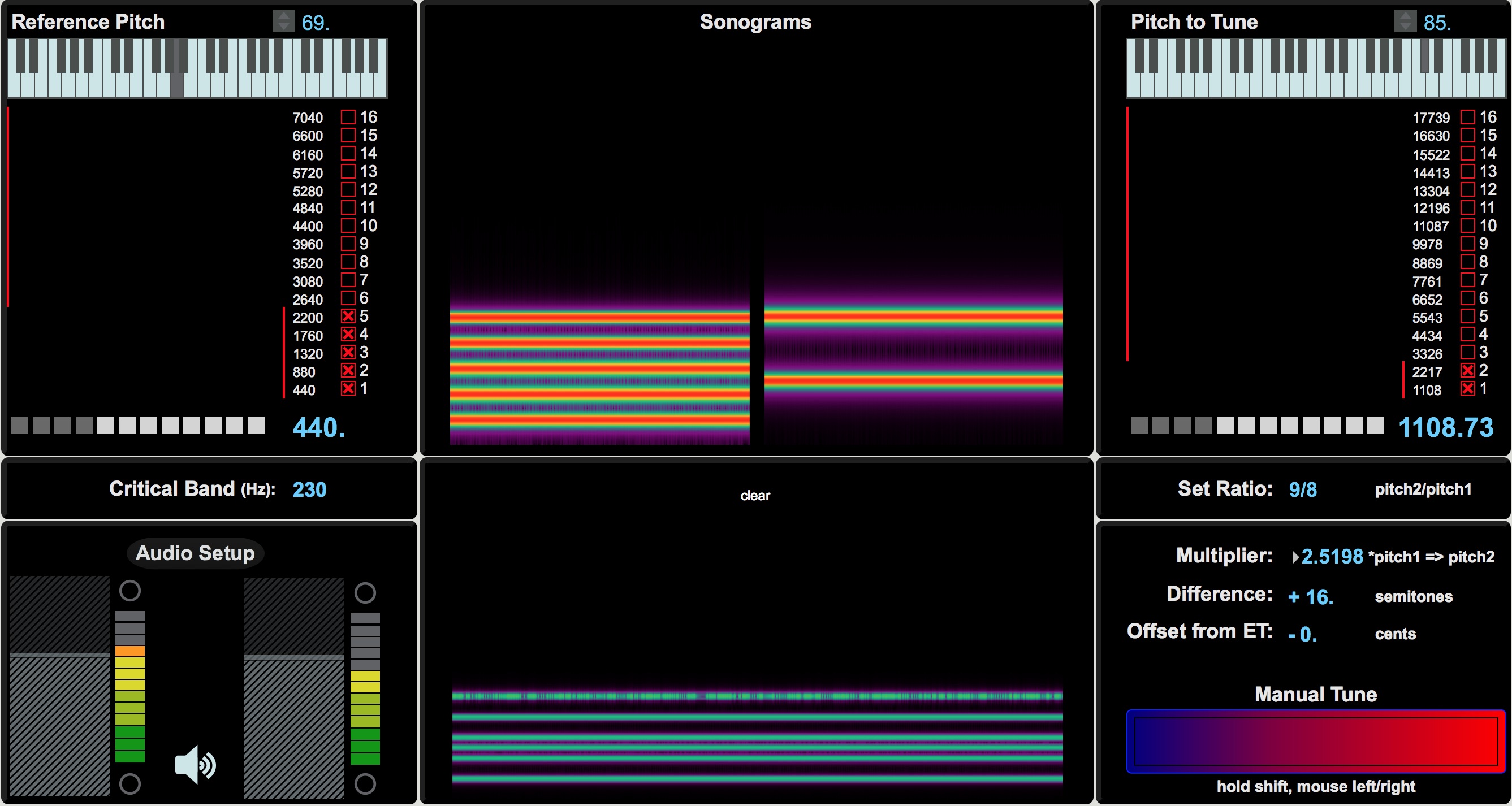bitSuite
Example #2: Tuning Major Octaves and 10ths
Try setting the reference pitch to 440hz and the user-tuned pitch to 880hz, both with only the 1st partial toggled ‘on.’ Now, begin manually moving the second pitch around. Can you hear the changes as you tune? It’s almost impossible.
Now, add the second partial to the reference pitch. Things should become easier on the ears. Having octaves in a reference pitch strengthens the 2nd partial, making it far easier to tune. If your pitch is not exactly in tune, you will now clearly be able to see regular beating in the combined sonogram as well:

We can use the same logic to tune major 10ths. First, select a reference pitch (such as A4), then select a note to tune that is a major 10th higher (such as C#5).
The ratio for a just-tuned major 10th is 5/2. If you toggle ‘on’ the first five overtones on the reference pitch, and toggle ‘on’ the first two overtones on the major 10th pitch, you will see the top bands line up on the combined sonograms. You will also see and hear a huge amount of beating because of the discrepancy between equal temperament and just tuning. This is due to the differences between the upper partials of both notes. You can manually tune to eliminate the beating: This will produce a multiplier of 2.5, or 5/2.

For another ET 10th, you can also start by choosing the ratio of 5/4, with a multiplier of 1.25. This will produce a major 3rd instead of major 10th: Simply change the multiplier to 2.5 to produce a Pythagorean major 10th.